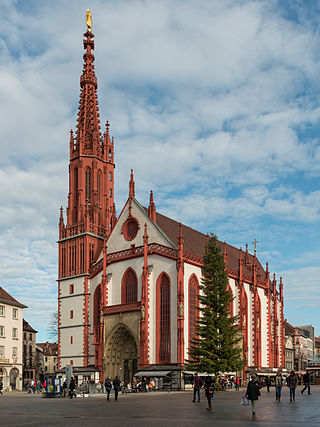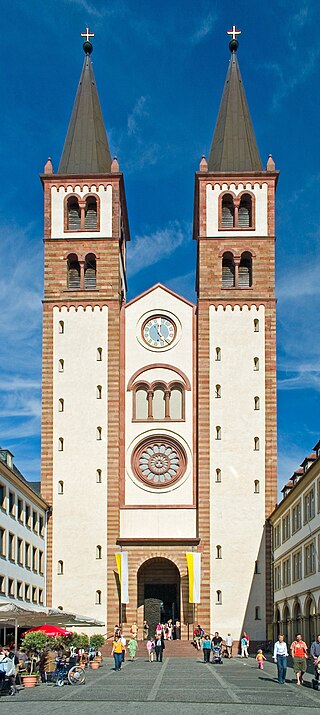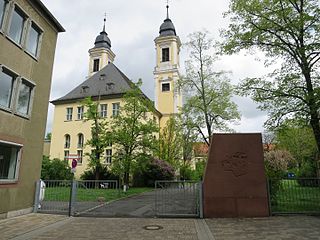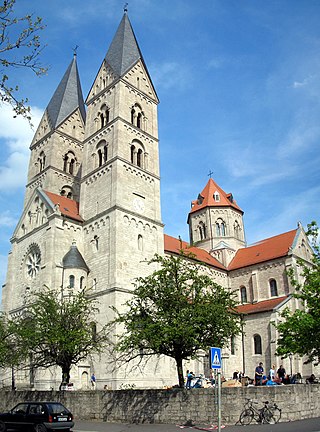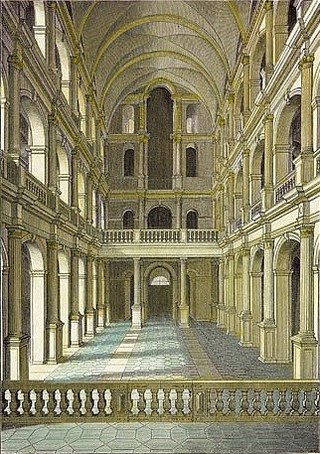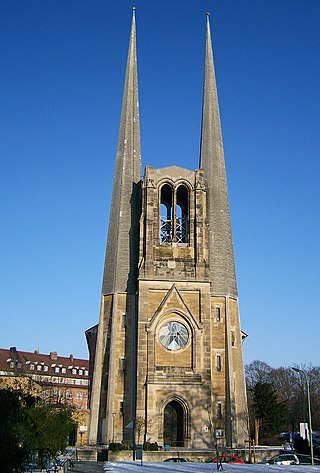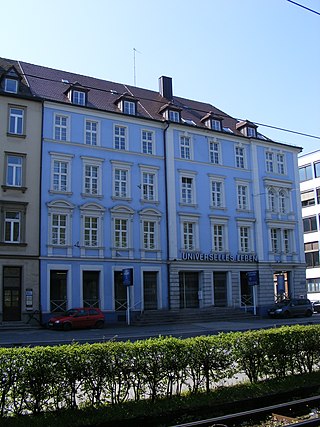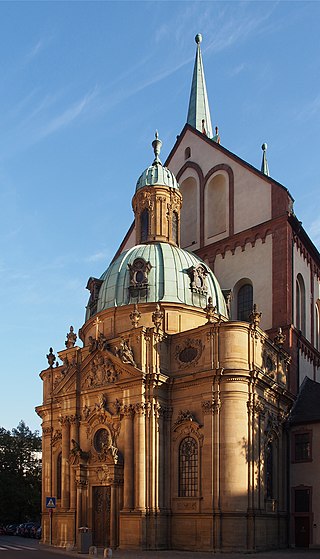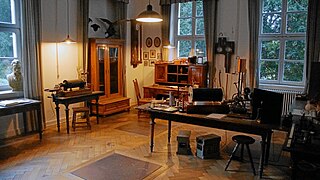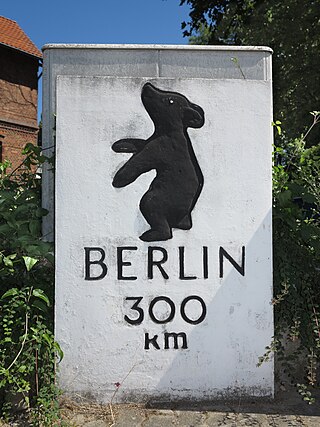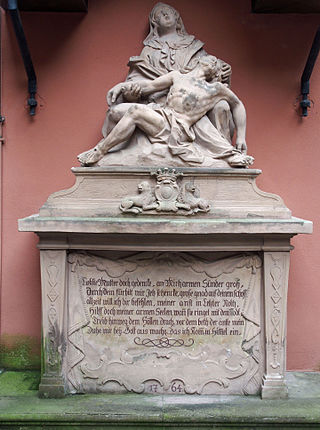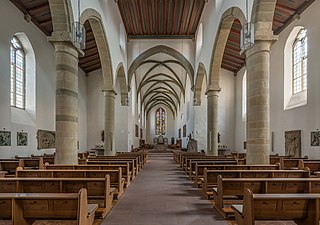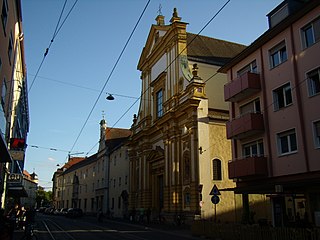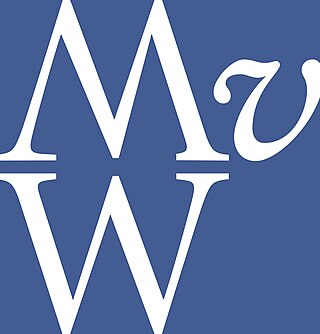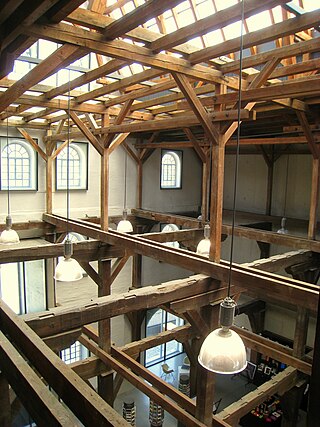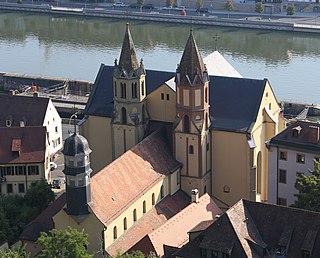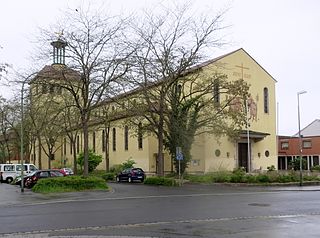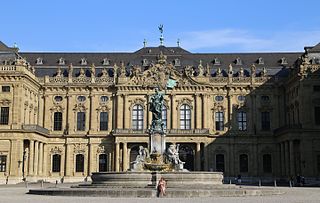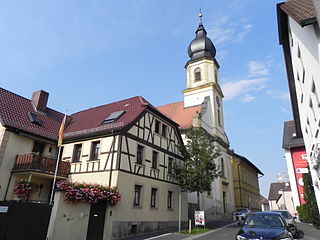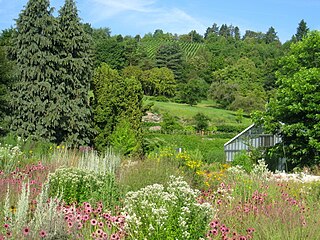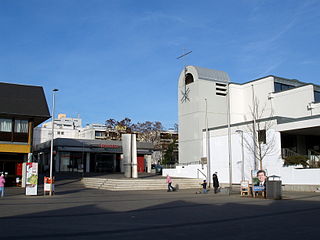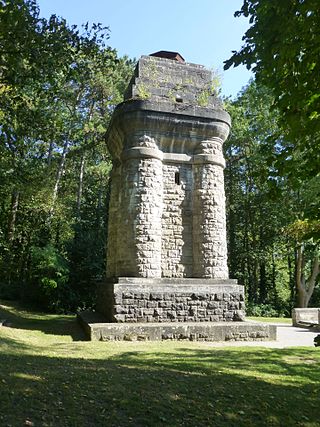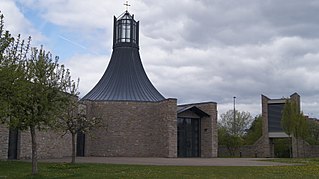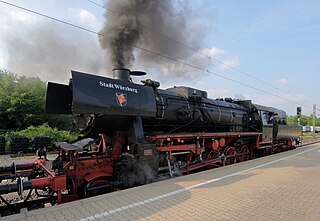27 Sights in Würzburg, Germany (with Map and Images)
Legend
Premium Sights
Book tickets, guided tours and activities in Würzburg.
Guided Free Walking Tours
Book free guided walking tours in Würzburg.
Welcome to your journey through the most beautiful sights in Würzburg, Germany! Whether you want to discover the city's historical treasures or experience its modern highlights, you'll find everything your heart desires here. Be inspired by our selection and plan your unforgettable adventure in Würzburg. Dive into the diversity of this fascinating city and discover everything it has to offer.
Sightseeing Tours in WürzburgActivities in WürzburgThe Old Main Bridge is the oldest bridge over the Main in Würzburg and a landmark of the city. The construction, which began in the 15th century, was Würzburg's only river crossing until 1886. The bridge, part of the East-West Passage, connects the old town on the right bank of the Main with the Marienberg Fortress opposite at kilometre 252.32 on the Main. It is used by pedestrian and bicycle traffic. With its stone figures that characterise the cityscape, the Old Main Bridge in the 18th century, like Prague's Charles Bridge, continued a tradition begun in Rome with the Angel Bridge.
The Marienkapelle is a Roman Catholic church located at the Unterer Markt of the town of Würzburg, Bavaria. It was built in the Gothic style in the 14th century. Despite its large size, it is a chapel by status, as it does not have a parish. Today it is administered by the united parishes of the Würzburg Cathedral and the Kollegiatstift Neumünster.
Würzburg Cathedral is a Roman Catholic cathedral in Würzburg in Bavaria, Germany, dedicated to Saint Kilian. It is the seat of the Bishop of Würzburg and has served as the burial place for the Prince-Bishops of Würzburg for hundreds of years. With an overall length of 103 metres, it is the fourth largest Romanesque church building in Germany, and a masterpiece of German architecture from the Salian period. Notable later additions include work by Tilman Riemenschneider and Balthasar Neumann. The cathedral was heavily damaged by British bombs in March 1945 but rebuilt post-World War II.
4. Sankt Stephan
St. Stephan, also called Stephanskirche, has been the first longer existing Evangelical Church of Würzburg since 1803. It goes back to the monastery church of a Benedictine convention of St. Stephan, which was dissolved by secularization. A few years earlier, the old building of the monastery church was largely demolished in 1788/89 and a new building was built according to Johann Philipp Geigel plans. The old building with the associated monastery buildings goes back to 1014, namely to a former St. Peter and Paul college pencil, which was converted into a Benedictine monastery by Bishop Adalbero in 1057. After the transfer of relics of St. Stephanus, it was only named after this, while the name St. Peter and Paul was transferred to the new parish church. The monastery buildings were used profane after 1803, totally destroyed and removed in 1945. New buildings took up the government of Lower Franconia. The church was rebuilt in 1949–1955 as a flat hedged hall building, inaugurated in 1952 and is now the dean's church of Würzburg. In addition to the existing CVJM from 1963, institutions such as the Rudolf Alexander-Schröder-Haus, an Evangelical bookstore and a advice center of the Diakonie were created in addition to the existing CVJM, which made the place a Würzburg Evangelical Center.
5. Stift Haug
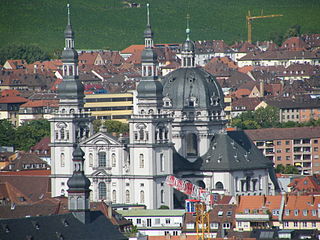
Haug Abbey is the name given to the parish church of St. Johannes in Würzburg located in the district of Haug, and the associated parish is St. Johannes in Haug Abbey. The former collegiate church belonged to the collegiate monastery of Haug until secularization in 1803. The church, dedicated to John the Baptist and John the Evangelist, was completed in 1691 according to plans by Antonio Petrini. The two towers of Haug Abbey are the second highest church towers in Würzburg with a height of 75 meters.
6. Adalberokirche
St. Adalbero is a Catholic parish church opened in 1899, was an expository from 1905 and since 1914 has also been a parish in the Würzburg district of Sanderau, which adjoins the city center in the south. Together with the church of St. Andrew, it forms the parish community of Sanderau and is an outstanding example of neo-Romanesque architecture. The art-historical significance of the Adalbero Church for Würzburg lies above all in the fact that at the time of its construction, all sculptors and painters living in Würzburg contributed to the interior design.
7. Neubaukirche
The Neubaukirche is a former university church and profaned Renaissance church in Würzburg, which today serves as an auditorium for the University of Würzburg. It is considered one of the most important church buildings of the Renaissance north of the Alps. Construction began in 1583 by master builder Georg Robin and was completed in 1696 to 1704 by Antonio Petrini and Joseph Greissing, who mainly rebuilt the upper tower floors, including the dome and lantern. After severe damage in the Second World War, the new church was rebuilt between 1970 and 1985.
8. St. Johannis
The St. John's Church is the second Evangelical Lutheran parish church in Würzburg after St. Stephen's and at the same time the first to be built by the Protestant community itself. It was consecrated to John the Baptist on June 24, 1895. The church, which was rebuilt after destruction due to the war and reconsecrated in 1957, is located in Würzburg's city centre about 200 metres northeast of the Residenz at the junction of Hofstallstraße and Husarenstraße. Due to the road network, it is not exactly geostatic, but points to the northeast.
9. Universelles Leben
Universal Life is the name of a controversial new religious movement based in Marktheidenfeld, Germany, which is described by members as a part of the new revelation movement. The group was originally called Heimholungswerk Jesu Christi, but has been known as Universal Life since 1984.
10. Schönbornkapelle
The so-called Schönborn Chapel at the northern transept of Würzburg Cathedral was built from 1721 onwards, mainly by Balthasar Neumann on behalf of Johann Philipp Franz von Schönborn until 1724 (shell) and from 1731 to 1736 by Friedrich Carl von Schönborn as a burial place for the Schönborn family.
11. Röntgen-Gedächtnisstätte Würzburg
The Röntgen Memorial Site in Würzburg, Germany, is dedicated to the work of the German physicist Wilhelm Conrad Röntgen (1845–1923) and his discovery of X-rays, for which he was granted the first Nobel Prize in physics, in 1901. It contains an exhibition of historical instruments, machines and documents.
12. Berliner Meilenstein
The Berlin Milestones are small monuments with mileage to the German capital Berlin. At the time of German division in the second half of 20th century, the milestones were furnished in numerous location in former West Germany. It has the Berlin Bear on it. After the German Reunification it remained as a memorial of the history of German division. Many of the monuments are located on highways and federal roads.
13. Lusamgärtchen
The Lusamgärtchen is a small walled courtyard formerly called Grashof at Martinstraße 4 on the north side of the Neumünster Church in Würzburg. It was originally laid out in the middle of the late Romanesque cloister of the Neumünster monastery. Within the garden is the tomb for the minstrel Walther von der Vogelweide.
14. Franziskanerkirche Hl. Kreuz
The Franciscan Church is a Catholic church building in Würzburg of the Franciscan Minorite Monastery of Würzburg. The monastery church of the Franciscan Order is located in the city center between Franziskanergasse and Franziskanerplatz.
15. Karmelitenkirche
The Carmelite Church of St. Joseph and St. Mary Magdalene in Würzburg was built between 1662 and 1669 by Antonio Petrini. The cross-shaped baroque building with a well-structured façade is the monastery church of the Würzburg Carmelite monastery of St. Mary Magdalene. It was not until 1997 to 2001 that the church received new furnishings to replace the one that had been destroyed in the Second World War. It is still popularly referred to today as the Reuererkirche.
Wikipedia: St. Joseph und St. Maria Magdalena (Würzburg) (DE), Website
16. Martin-von-Wagner-Museum
The Martin von Wagner Museum contains the art collection of the University of Würzburg and has been located in the south wing of the Würzburg Residence since 1963. It is among the largest university museums in Europe.
17. Museum im Kulturspeicher
The Museum im Kulturspeicher in Würzburg displays art from the 19th century to the present. It is located in a converted river-side warehouse since 2002. After the previous director Marlene Lauter retired after nearly 30 years of service, the art historian Luisa Heese took over as director of the museum on September 1, 2020
18. St. Burkard
St. Burchard's Abbey was a Benedictine monastery in Würzburg, Germany, initially known as St. Andrew's Abbey. It was the first abbey established in Würzburg, founded ca. 750. In 1464, it was transformed into a Stift.
19. St. Elisabeth / Heiligkreuz
The parish church of Heiligkreuz Würzburg is a Roman Catholic parish church in the Zellerau district of Würzburg, Germany. It is located in Sedanstraße, at the corner of Friedrichstraße and is a protected monument with the file number D-6-63-000-165 of the Bavarian State Office for the Preservation of Monuments.
20. Frankoniabrunnen
The Frankonia Fountain is a monumental fountain on the Residenzplatz in Würzburg, Germany. It was created in 1894 by the architect Gabriel von Seidl and the sculptor Ferdinand von Miller in the neo-baroque style for the Prince Regent Luitpold of Bavaria.
21. St. Laurentius
The Catholic parish church of St. Laurentius in the Lengfeld district of Würzburg is a hall church in the style of the late Baroque classicism of 1802. It has become too small for the populous district of Lengfeld and has been supplemented by the ecumenical centre St. Lioba.
22. Botanischer Garten
The Botanischer Garten der Universität Würzburg is a botanical garden maintained by the University of Würzburg. It is located at Julius-von-Sachs-Platz 4, Würzburg, Bavaria, Germany, and open daily; admission is free.
Wikipedia: Botanic Garden of Würzburg University (EN), Website
23. St. Sebastian
The parish church of St. Sebastian in the Würzburg district of Heuchelhof is a parish church of the Catholic deanery of Würzburg-Stadt. The church was built in the years 1976–1977 according to plans by Friedrich Ebert.
24. Bismarckturm Würzburg
The Bismarck Tower in Würzburg is a 15 m high observation tower in the Bismarck Forest above the Weinberg am Stein. It was built in 1905 and, like all the other Bismarck Towers built in Germany, was also a monument to Otto von Bismarck, who was revered as a co-founder of the German Reich.
25. St. Laurentius
The Roman Catholic, listed parish church of St. Laurentius is located in Heidingsfeld, a district of the independent city of Würzburg. The church is registered as an architectural monument in the Bavarian List of Monuments under the monument number D-6-63-000-266. The parish belongs to the parish community of Heidingsfeld in the deanery of Würzburg-Stadt of the Diocese of Würzburg.
26. Gethsemanekirche
The Gethsemane Church in the Würzburg district of Heuchelhof is a parish church of the Evangelical Lutheran deanery of Würzburg. It was built in 1998–2001 according to the plans of Alexander von Branca. The architect had also planned St. Michael's Church on the Schwanberg in the district of Kitzingen.
Wikipedia: Gethsemanekirche (Würzburg-Heuchelhof) (DE), Website
27. Eisenbahnmuseum Würzburg
The Würzburg Railway Museum is a railway museum of the German Society for Railway History (DGEG) in Würzburg, Germany. The mobile museum, located at Würzburg-Zell station, organises public trips and special trips on order in the greater Würzburg area with the class 52 freight train steam locomotive 52 built in 1943.
Share
How likely are you to recommend us?
Disclaimer Please be aware of your surroundings and do not enter private property. We are not liable for any damages that occur during the tours.

